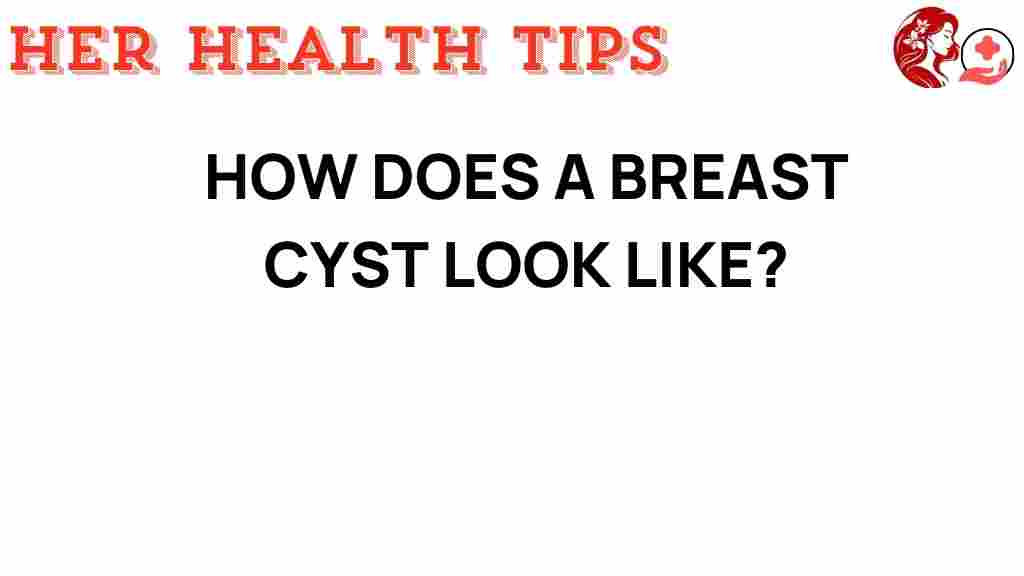Unveiling the Mystery: How Does a Breast Cyst Look Like?
Breast cysts are fluid-filled sacs that can develop within the breast tissue, and they are typically benign (non-cancerous). Understanding the appearance, symptoms, diagnosis, and treatment options for breast cysts is crucial for women’s health. This article aims to demystify breast cysts, focusing on their characteristics, how to identify them, and the importance of health awareness in prevention and treatment.
What is a Breast Cyst?
A breast cyst is a common condition experienced by many women, particularly during their reproductive years. These cysts can vary in size, from small pea-sized lumps to larger formations, and can develop in one or both breasts. While breast cysts are generally harmless, they can sometimes cause discomfort or concern.
How Does a Breast Cyst Look Like?
Breast cysts can appear differently depending on their size and whether they are filled with fluid or are solid. Here are some characteristics of breast cysts:
- Shape: Breast cysts are often round or oval-shaped.
- Texture: They may feel smooth and firm, similar to a water-filled balloon.
- Size: Breast cysts can range from very small (a few millimeters) to larger cysts that can be several centimeters wide.
- Mobility: Many breast cysts are movable; when pressed, they might shift slightly under the skin.
It’s important to note that while breast cysts are typically benign, any changes in the breast should be evaluated by a healthcare professional.
Symptoms of a Breast Cyst
Recognizing the symptoms of breast cysts is essential for early detection and treatment. Common symptoms include:
- Lump or swelling: A noticeable lump in the breast that may be tender or painful, particularly before menstruation.
- Changes in breast size: Fluctuations in size, especially in relation to the menstrual cycle.
- Discomfort: Some women may experience discomfort or pain, particularly if the cyst is large.
If you notice any of these symptoms, it’s important to consult a healthcare provider for further evaluation.
Diagnosis of Breast Cysts
Diagnosing breast cysts involves a combination of physical examinations and imaging tests. Here’s a step-by-step process for diagnosis:
- Physical Examination: A healthcare provider will conduct a thorough breast examination to check for lumps or abnormalities.
- Imaging Tests: Imaging techniques such as ultrasound or mammography are used to visualize the cysts. Ultrasound is particularly effective in distinguishing between fluid-filled cysts and solid masses.
- Fine Needle Aspiration: In some cases, a fine needle aspiration may be performed to collect fluid from the cyst for analysis.
These diagnostic methods help ensure accurate identification and appropriate treatment of breast cysts.
Imaging Techniques for Breast Cysts
Imaging plays a crucial role in diagnosing breast cysts. Here are the primary imaging techniques used:
- Ultrasound: This technique uses sound waves to create images of the breast tissue. It’s particularly useful for differentiating between cysts and solid masses.
- Mammography: A mammogram can help identify abnormalities in breast tissue. It’s typically recommended for women over 40 or those with a family history of breast cancer.
Both imaging techniques are essential for ensuring a thorough evaluation of breast health and detecting any potential issues early on.
Health Awareness and Women’s Health
Health awareness is vital for women’s health, especially regarding breast health. Here are some key points:
- Regular Screenings: Women should schedule regular breast examinations and mammograms as recommended by their healthcare provider.
- Self-Exams: Conducting regular self-exams can help women become familiar with their breast tissue and identify any changes early.
- Healthy Lifestyle: Maintaining a balanced diet, exercising regularly, and avoiding excessive alcohol can contribute to overall breast health.
For more information on women’s health, consider visiting health resources that focus on breast health awareness.
Prevention of Breast Cysts
While not all breast cysts can be prevented, there are steps women can take to promote breast health and potentially reduce the risk:
- Manage Hormone Levels: Hormonal fluctuations can contribute to the formation of cysts, so managing hormone levels through lifestyle changes or medication may be beneficial.
- Dietary Considerations: A diet rich in fruits, vegetables, and whole grains while low in saturated fats may help maintain breast health.
- Regular Exercise: Engaging in regular physical activity can help maintain a healthy weight and regulate hormones.
Treatment Options for Breast Cysts
Most breast cysts do not require treatment unless they are causing discomfort. Here are the common treatment options:
- Observation: If the cyst is small and asymptomatic, a healthcare provider may recommend a wait-and-see approach.
- Fine Needle Aspiration: This procedure can relieve discomfort by removing fluid from the cyst.
- Surgery: In rare cases, surgical removal of the cyst may be necessary, particularly if it recurs or is suspected to be malignant.
It’s important to discuss treatment options with a healthcare provider to determine the best course of action based on individual circumstances.
Troubleshooting Tips for Breast Cysts
If you suspect you have a breast cyst or experience symptoms, consider the following troubleshooting tips:
- Keep a Symptom Diary: Note any changes in your breast tissue, pain levels, and menstrual cycle to share with your healthcare provider.
- Consult a Healthcare Provider: Don’t hesitate to seek medical advice if you notice any new lumps or changes in your breast tissue.
- Stay Informed: Educate yourself on breast health and be aware of the changes in your body.
Conclusion
Understanding how a breast cyst looks like and its associated symptoms is crucial for women’s health. Regular screenings, awareness of changes in breast tissue, and maintaining a healthy lifestyle can aid in the prevention and early diagnosis of breast cysts. If you experience any unusual symptoms, consult a healthcare provider promptly to ensure proper evaluation and care.
For more information on breast health, visit reputable health organizations or consult your healthcare provider for guidance.
By taking proactive measures, women can significantly contribute to their breast health and overall well-being.
This article is in the category Conditions and created by HerHealthTips Team
